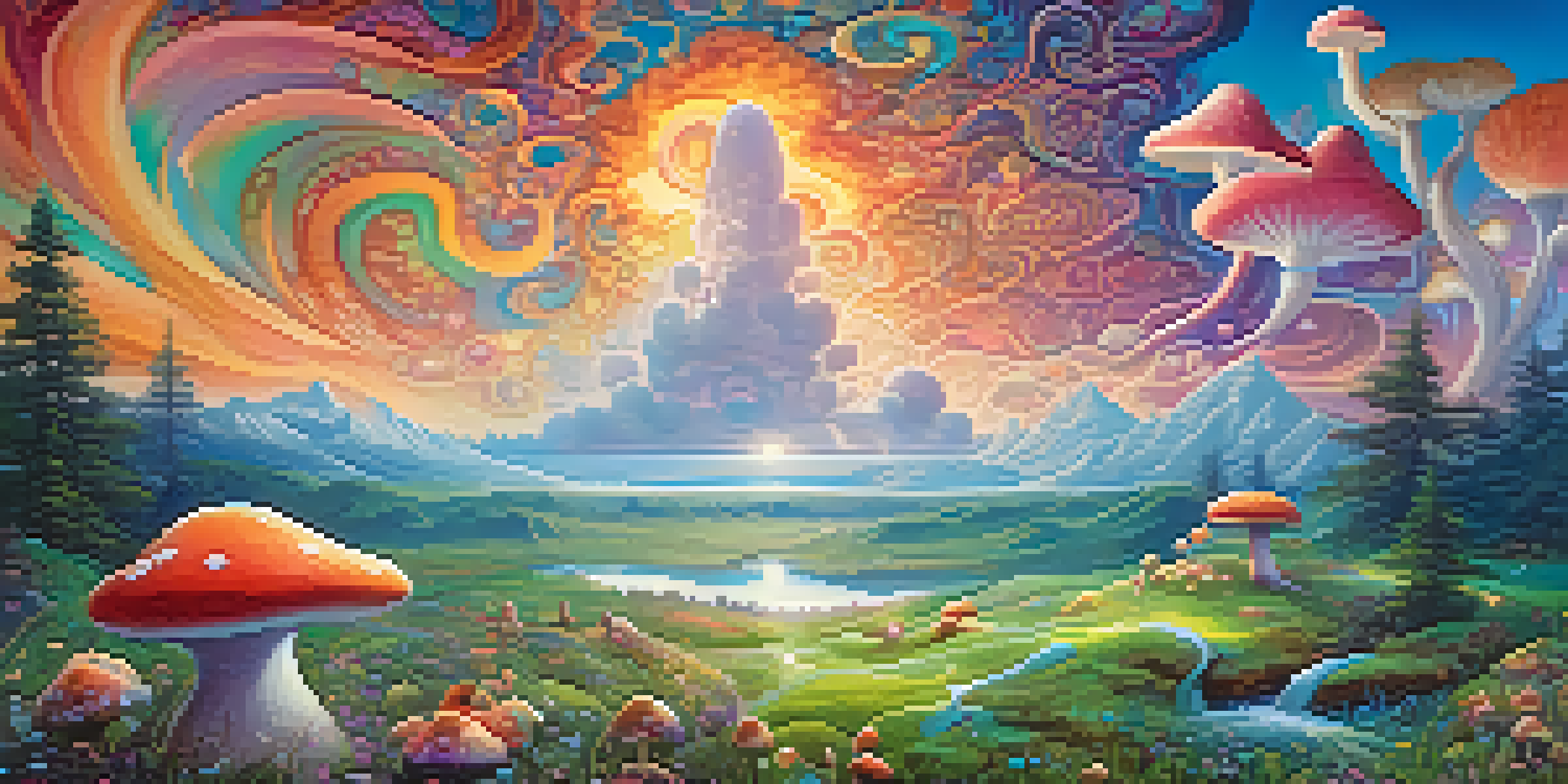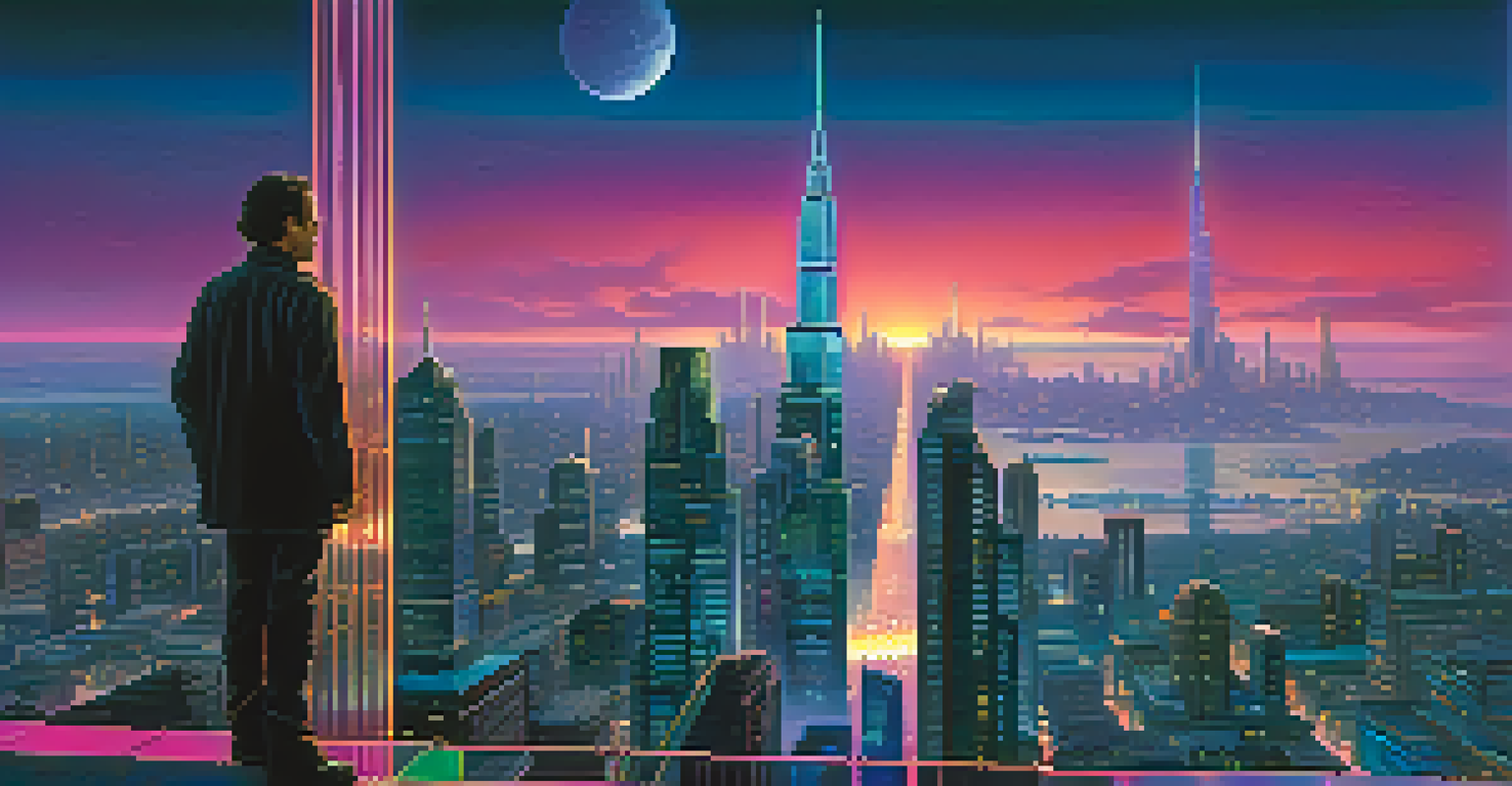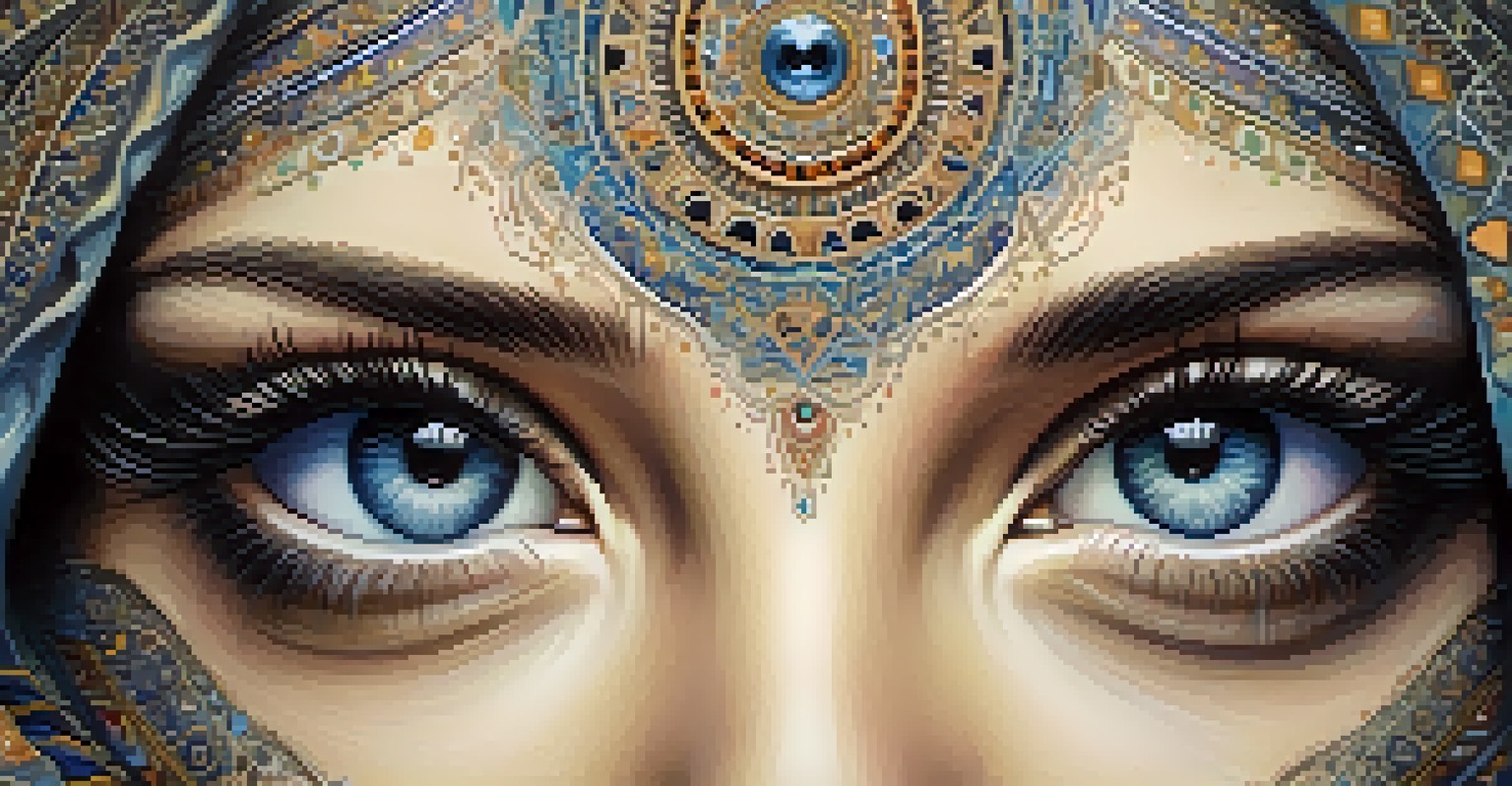Entheogenic Themes in Modern Sci-Fi Films and Series

Understanding Entheogens: A Brief Overview
Entheogens are substances that can induce altered states of consciousness, often used in spiritual or religious contexts. Common examples include psilocybin mushrooms and ayahuasca, which have been used for centuries by various cultures. In modern media, these substances are often portrayed as tools for exploration, self-discovery, and even transcendence.
The experience of entheogens can be a doorway to a deeper understanding of consciousness and reality.
In recent years, there has been a growing interest in the therapeutic potential of entheogens, particularly in the fields of psychology and mental health. This resurgence has influenced filmmakers to incorporate such themes into their narratives, creating a bridge between ancient practices and contemporary issues. As a result, audiences are invited to explore these profound experiences vicariously through the characters on screen.
Ultimately, understanding entheogens provides a foundation for examining their representation in modern sci-fi. These substances challenge our perceptions of reality and consciousness, making them a rich theme for storytelling that resonates with both personal and collective journeys.
The Role of Altered States in Storytelling
Altered states of consciousness can serve as powerful storytelling devices, allowing characters to transcend their limitations and explore new dimensions. In sci-fi, this often manifests through the use of technology or substances that alter perception, leading to transformative experiences. These journeys challenge characters to confront their deepest fears and desires, making for compelling narratives.

For instance, in series like 'Altered Carbon,' the concept of consciousness transfer presents a unique take on identity and existence. Characters navigate not only physical changes but also psychological transformations, raising questions about what it truly means to be human. Such explorations deepen the viewer's engagement, as they ponder their own beliefs about consciousness and reality.
Entheogens and Spiritual Exploration
Entheogens serve as catalysts for spiritual awakening, prompting characters to confront existential questions in modern sci-fi narratives.
Ultimately, altered states offer a lens through which audiences can examine their own lives and choices. By witnessing characters embark on these journeys, viewers are encouraged to think critically about their perceptions and the nature of their own experiences.
Psychedelic Aesthetics in Visual Storytelling
Modern sci-fi films often employ vibrant and surreal visuals to evoke the essence of entheogenic experiences. This psychedelic aesthetic captures the viewer's imagination, immersing them in dreamlike realms that reflect altered states of consciousness. Films like 'Doctor Strange' and 'Inception' utilize such visuals to enhance themes of reality and perception.
Psychedelics can help create a sense of connection and understanding of the universe and our place in it.
These striking visuals serve a dual purpose: they not only entertain but also invite viewers to consider the deeper meanings behind the sensory overload. By presenting a world that defies conventional logic, filmmakers encourage audiences to reflect on the nature of their own realities. This intertwining of aesthetics and philosophy creates a rich tapestry that captivates and provokes thought.
Moreover, the use of psychedelic elements often parallels the emotional arcs of characters, mirroring their internal struggles and breakthroughs. This connection between visual storytelling and character development enhances the overall impact of the narrative, leaving viewers with lasting impressions.
Exploring Spirituality through Sci-Fi Narratives
Many modern sci-fi films delve into spiritual themes, often intertwining them with entheogenic experiences. By exploring concepts of enlightenment, interconnectedness, and the nature of existence, these narratives resonate with audiences seeking deeper understanding. Films like 'The Matrix' and 'Arrival' encourage viewers to reflect on their own beliefs and the nature of reality.
In these narratives, entheogens may act as catalysts for spiritual awakening or profound insights, prompting characters to confront existential questions. This exploration often leads to transformative experiences that challenge their perceptions and reshape their understanding of life. Such themes resonate with viewers who are on their own journeys of self-discovery and spiritual exploration.
Altered States in Storytelling
Altered states of consciousness enhance storytelling by allowing characters to transcend limitations and explore new dimensions of identity and existence.
Ultimately, these films serve as mirrors reflecting the human quest for meaning in an increasingly complex world. By incorporating entheogenic themes, filmmakers invite audiences to embark on their own explorations of spirituality and consciousness.
The Intersection of Technology and Entheogens
As technology continues to advance, modern sci-fi often explores the intersection between technological and entheogenic experiences. Films like 'Transcendence' and 'Altered Carbon' present scenarios where technology enhances or mimics the effects of entheogens, raising questions about authenticity and the essence of consciousness. This blend of science and spirituality challenges viewers to consider the implications of such advancements.
These narratives often highlight the potential consequences of relying on technology for transcendence, prompting discussions about its ethical and philosophical implications. Characters may grapple with the line between human experience and artificially induced states, leading to deeper reflections on what it means to be truly alive. This tension creates a compelling backdrop for exploring themes of identity and existence.
Ultimately, the intersection of technology and entheogens in sci-fi serves as a catalyst for exploring the future of human consciousness. As these themes continue to evolve, they invite audiences to question the very fabric of reality and their place within it.
Cultural Representations of Entheogenic Experiences
Cultural representations of entheogenic themes in modern sci-fi often reflect a diverse range of perspectives and practices. Films and series draw inspiration from various cultural traditions, such as indigenous practices involving ayahuasca or peyote. This inclusion enriches the narrative landscape, providing audiences with a broader understanding of the role of entheogens across different societies.
By showcasing these varied cultural contexts, filmmakers invite viewers to appreciate the historical and spiritual significance of entheogens. This representation fosters a sense of respect and curiosity, encouraging audiences to learn more about the practices and beliefs of different cultures. In doing so, modern sci-fi becomes a platform for cross-cultural dialogue and exploration.
Cultural Perspectives on Entheogens
Modern sci-fi reflects diverse cultural practices surrounding entheogens, fostering respect and curiosity about their historical and spiritual significance.
Moreover, these cultural representations often challenge stereotypes and misconceptions surrounding entheogens, promoting a more nuanced understanding of their uses and effects. By presenting authentic narratives, filmmakers contribute to the ongoing conversation about the importance of respecting and honoring diverse cultural practices.
Future Trends: Entheogens in Upcoming Sci-Fi
As interest in entheogens continues to grow, modern sci-fi films and series are likely to explore these themes even more deeply. With advancements in research and a shifting cultural landscape, filmmakers are poised to push the boundaries of storytelling. Upcoming projects may delve into new frontiers of consciousness, exploring the potential of entheogens in ways we've yet to imagine.
This evolving narrative landscape invites audiences to engage with complex questions about identity, spirituality, and the nature of reality. As filmmakers experiment with innovative storytelling techniques, viewers can expect fresh perspectives on how entheogens can be integrated into futuristic scenarios. The potential for exploration is vast, promising exciting developments in the genre.

Ultimately, the future of entheogenic themes in sci-fi holds the promise of fostering deeper conversations about consciousness and the human experience. As we navigate this evolving landscape, audiences can look forward to thought-provoking narratives that challenge their perceptions and inspire introspection.